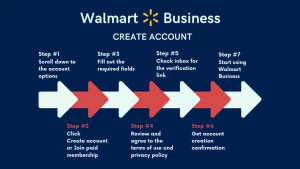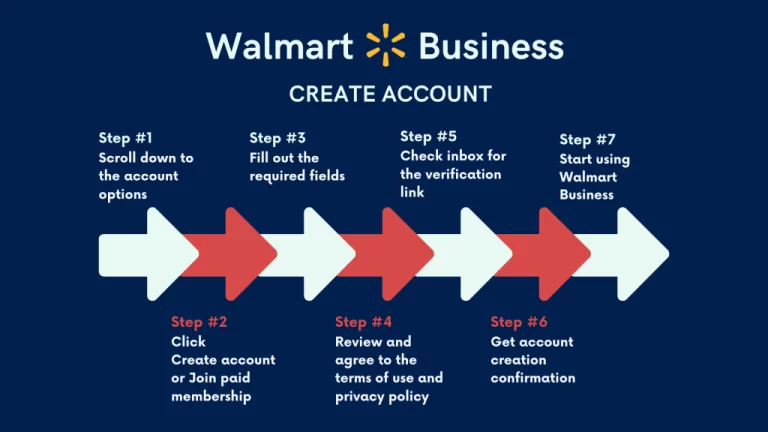
Breaking Barriers: The Importance of Web Accessibility
In today’s digital age, it’s easy to forget that not everyone has equal access to the internet. For many people with disabilities, navigating the web can be a daunting and frustrating experience. The good news is that with advancements in technology, we now have the ability to create websites that are accessible to everyone. This is where web accessibility comes in. In this post, we’ll explore what web accessibility is, why it’s important, and how you can ensure that your website is accessible to everyone. We’ll also discuss the legal and ethical implications of not making your website accessible. So, whether you’re a web designer or a website owner, read on to learn how you can break down barriers and create an inclusive online space for all users.
1. Understanding web accessibility and its significance
In today’s digital age, web accessibility has become a crucial aspect of creating an inclusive online environment. Simply put, web accessibility refers to designing and developing websites and digital content in a way that ensures equal access and usability for all individuals, regardless of their abilities or disabilities. It is about eliminating barriers that may prevent people with disabilities from fully engaging with and benefiting from online experiences.
The significance of web accessibility cannot be overstated. It is not just a moral responsibility but also a legal requirement in many countries. By making your website accessible, you are not only complying with legal obligations but also tapping into a vast potential customer base that includes people with disabilities.
Imagine visiting a website that is cluttered with complex navigation, tiny fonts, and color schemes that are difficult to read for individuals with visual impairments. Or imagine a website that relies heavily on audio or video content without providing alternatives for individuals with hearing impairments. These barriers can prevent people with disabilities from accessing vital information, making purchases, or participating in online activities.
Web accessibility goes beyond catering to individuals with disabilities; it also benefits other users. A website that is accessible to all is user-friendly, intuitive, and provides a seamless experience for everyone. By implementing accessibility features, you enhance the usability and overall user experience of your website, making it easier for all visitors to navigate, find information, and interact with your content.
Moreover, web accessibility is not just limited to technical aspects. It involves a broader mindset of inclusivity and empathy towards diverse users. By understanding the barriers that people with disabilities face and actively working towards removing those barriers, you foster a more inclusive online community and contribute to a more equitable society.
In conclusion, web accessibility is not an optional feature but an essential aspect of creating an inclusive and user-friendly online environment. It is about breaking down barriers and ensuring equal access and usability for all individuals, regardless of their abilities or disabilities. By embracing web accessibility, you not only comply with legal requirements but also improve the overall user experience and tap into a wider audience.
2. The impact of inaccessible websites on individuals with disabilities
The impact of inaccessible websites on individuals with disabilities cannot be overstated. In today’s digital age, the internet has become an integral part of our daily lives. From shopping and banking to accessing information and connecting with others, the web is a gateway to a world of opportunities. However, for individuals with disabilities, navigating through websites that are not accessible can be an incredibly frustrating and isolating experience.
Imagine trying to make an online purchase but being unable to navigate the website due to a lack of proper headings, alternative text for images, or keyboard accessibility. Or picture a student with a visual impairment struggling to access educational content because the website does not support screen readers or provide text alternatives for multimedia. These are just a few examples of the barriers that individuals with disabilities face when websites are not designed with accessibility in mind.
Not only does a lack of web accessibility hinder individuals from fully participating in online activities, but it also reinforces societal barriers and perpetuates discrimination. It sends a message that individuals with disabilities are not valued or deserving of equal access to information and services. This not only goes against the principles of inclusivity and equality but also violates legal obligations in many countries.
Moreover, inaccessible websites not only affect individuals with disabilities but also impact businesses and organizations. By not prioritizing web accessibility, companies risk alienating a significant portion of their potential customer base. Studies have shown that individuals with disabilities have a combined spending power of trillions of dollars globally. By not catering to this market segment, businesses are missing out on valuable opportunities for growth and success.
Creating accessible websites is not only a moral and legal imperative, but it also makes good business sense. It allows individuals with disabilities to fully participate in the digital world, empowering them to live independent lives and contribute to society. It also demonstrates inclusivity and a commitment to diversity, enhancing brand reputation and customer loyalty.
In conclusion, the impact of inaccessible websites on individuals with disabilities is profound. It not only hinders their ability to access information and services but also perpetuates discrimination and exclusion. By prioritizing web accessibility, businesses and organizations can break down barriers, empower individuals with disabilities, and foster a more inclusive and equitable digital landscape for all.
3. Laws and regulations promoting web accessibility
In recent years, there has been a notable shift towards inclusivity and equal access to information and services for all individuals, including those with disabilities. This shift is reflected in the numerous laws and regulations that promote web accessibility.
One such regulation is the Americans with Disabilities Act (ADA) in the United States, which prohibits discrimination against individuals with disabilities and requires businesses and organizations to ensure equal access to their goods and services, including their websites. Failure to comply with ADA standards can result in legal consequences, including lawsuits and hefty fines.
Similarly, the Web Content Accessibility Guidelines (WCAG) developed by the World Wide Web Consortium (W3C) provide a set of standards and guidelines for web accessibility. These guidelines are widely recognized and adopted internationally, serving as a benchmark for creating inclusive web experiences.
Many countries have also implemented their own legislation to address web accessibility. For example, in the European Union, the Web Accessibility Directive requires public sector websites and mobile applications to meet certain accessibility standards. This ensures that individuals with disabilities can access essential government information and services without barriers.
Beyond legal obligations, businesses and organizations should recognize the moral imperative of web accessibility. Every individual, regardless of their abilities, deserves equal access to information, products, and services. By providing accessible websites, businesses not only comply with regulations but also demonstrate their commitment to inclusivity and social responsibility.
Moreover, an accessible website can have significant benefits for businesses. It expands the potential customer base, improves user experience for all users, increases search engine visibility, and enhances brand reputation. With an estimated one billion people worldwide living with disabilities, failing to prioritize web accessibility means excluding a large portion of potential customers and hindering business growth.
In conclusion, laws and regulations promoting web accessibility play a crucial role in breaking down barriers and creating a more inclusive digital landscape. Businesses and organizations should not only comply with these regulations but also embrace web accessibility as a fundamental principle, ensuring that every individual can navigate and engage with their online presence with ease.
4. Common barriers faced by individuals with disabilities online
Individuals with disabilities often face numerous barriers when navigating the online world. These barriers can significantly impact their ability to access information, products, and services that many take for granted. It is important to understand and address these barriers to create a more inclusive and accessible online environment for everyone.
One common barrier faced by individuals with disabilities is the lack of proper website design and development practices. Websites that are not designed with accessibility in mind may have elements that are difficult or impossible for users with disabilities to navigate. This can include issues such as unclear or inconsistent navigation menus, insufficient color contrast for those with visual impairments, and non-descriptive alternative text for images that make it difficult for individuals using screen readers to understand the content.
Another significant barrier is the absence of text alternatives for non-text content. Many websites rely heavily on visual elements, such as images, videos, and charts, to convey information. However, individuals with visual impairments or certain cognitive disabilities rely on alternative text descriptions or transcripts to understand the content. Without these alternatives, they are unable to fully engage with the information presented.
Furthermore, inaccessible multimedia content poses a challenge for individuals with disabilities. Videos without captions or audio descriptions exclude those with hearing impairments or visual impairments, respectively. Similarly, inaccessible PDF documents can be a barrier for individuals using assistive technologies, as these documents may not be properly tagged or formatted for screen readers.
Lastly, the lack of keyboard accessibility can be a significant barrier for individuals with mobility impairments. Many people with disabilities rely on alternative input devices, such as keyboards, switches, or voice commands, to navigate websites. If a website is not designed to be keyboard accessible, it can be nearly impossible for these individuals to interact with the content, complete forms, or make purchases.
Addressing these common barriers is crucial for creating an inclusive online experience for individuals with disabilities. By implementing web accessibility best practices, such as properly structuring content, providing alternative text and captions, and ensuring keyboard accessibility, we can break down these barriers and make the digital world more accessible for all.
5. The benefits of web accessibility for all users
Web accessibility is not only essential for individuals with disabilities, but it also benefits all users. By implementing accessible design principles, websites become more inclusive and user-friendly, enhancing the overall user experience for everyone.
One of the primary benefits of web accessibility is improved usability. When websites are designed with accessibility in mind, they become easier to navigate, understand, and interact with. This means that all users, regardless of their abilities, can easily find the information they need, complete tasks efficiently, and have a seamless browsing experience.
Additionally, accessible websites tend to have faster loading times and optimized performance. When websites are properly coded and designed, they are more compatible with different browsers, devices, and assistive technologies. This not only benefits individuals with disabilities but also ensures that all users can access the website on their preferred platforms, whether it’s a desktop computer, smartphone, or tablet.
Web accessibility also contributes to improved search engine optimization (SEO). Search engines prioritize websites that are accessible and user-friendly, resulting in higher rankings and increased visibility. By implementing accessibility features such as descriptive alt text for images, properly structured headings, and clear navigation, websites can attract more organic traffic and reach a broader audience.
Furthermore, web accessibility promotes social and corporate responsibility. Inclusivity should be a fundamental value for businesses and organizations. By ensuring that their websites are accessible, they demonstrate their commitment to equal access and equal opportunities for all individuals, fostering a more inclusive and equitable society.
In conclusion, the benefits of web accessibility extend far beyond catering to individuals with disabilities. Accessible websites provide improved usability, better performance, enhanced SEO, and demonstrate social and corporate responsibility. By breaking down barriers and designing inclusive digital spaces, we can create a more accessible and inclusive online environment for all users.
6. Designing an accessible website: Key considerations and best practices
Designing an accessible website is not only a moral responsibility but also a smart business decision. By making your website accessible, you ensure that all users, regardless of their abilities or disabilities, can navigate and interact with your content seamlessly. This not only enhances the user experience but also opens up your website to a larger audience.
When designing an accessible website, there are several key considerations and best practices to keep in mind. First and foremost, ensure that your website is compatible with assistive technologies such as screen readers, braille displays, and voice recognition software. This involves using proper HTML markup, providing alternative text for images, and ensuring that all interactive elements can be accessed and operated using a keyboard alone.
Another important aspect of web accessibility is providing clear and consistent navigation. Users should be able to easily find and understand the structure of your website, with headings, subheadings, and a logical hierarchy. Additionally, make use of descriptive link text that accurately conveys the purpose of the link, rather than relying on generic phrases like “click here.”
Pay attention to color contrast as well, as low contrast can make it difficult for users with visual impairments to read and understand your content. Aim for a high contrast ratio between text and background colors to ensure legibility. Furthermore, avoid relying solely on color to convey important information or instructions, as there may be users who are colorblind or have difficulty perceiving certain colors.
Consider the use of multimedia elements such as videos and audio. Provide captions and transcripts for videos to assist users who are deaf or hard of hearing. For audio content, offer a transcript or provide a text-based alternative to ensure that all users can access the information.
Lastly, regularly test your website’s accessibility using tools and techniques such as automated accessibility checkers and manual user testing with individuals who have disabilities. This will help identify any potential barriers and allow you to make necessary improvements.
By following these key considerations and best practices, you can create a website that is inclusive and accessible to all users. Remember, web accessibility is not only about complying with legal requirements but also about embracing diversity and ensuring equal access to information and services for everyone.
7. Testing and evaluating website accessibility
When it comes to web accessibility, testing and evaluating your website is crucial. It is not enough to simply implement accessibility features; you need to ensure they are effective and properly implemented. By testing and evaluating your website’s accessibility, you can identify any barriers that may exist and take steps to address them.
There are various tools and methods available to help you test the accessibility of your website. Automated testing tools can quickly scan your website and provide feedback on potential accessibility issues. These tools can check for things like proper alt text for images, correct heading structure, and keyboard accessibility.
However, it is important to note that automated testing tools are not foolproof and may not catch all accessibility issues. Manual testing is also necessary to ensure that all aspects of your website are accessible. This can involve using assistive technologies, such as screen readers or voice recognition software, to navigate and interact with your website as a person with disabilities would.
In addition to testing, it is important to regularly evaluate your website’s accessibility. This involves gathering feedback from users with disabilities, conducting usability testing, and analyzing website analytics. By actively seeking feedback and evaluating the accessibility of your website, you can continuously improve and address any accessibility barriers that may arise.
Remember, web accessibility is an ongoing process. As technology and accessibility guidelines evolve, it is important to stay up to date and ensure that your website remains accessible to all users. By prioritizing testing and evaluation, you can break down barriers and create an inclusive online experience for everyone.
8. Essential accessibility features and tools
In today’s digital age, it is crucial for websites to be accessible to all users, regardless of their disabilities or impairments. Implementing essential accessibility features and tools not only ensures compliance with accessibility standards but also opens up your website to a wider audience, improving user experience and potentially boosting your business.
One fundamental feature is the use of alternative text or alt text for images. Alt text provides a text description of the image, allowing visually impaired users to understand its content through screen readers. This simple addition is not only helpful for those with visual impairments but also benefits users with slow internet connections or those using devices that do not display images.
Another crucial accessibility feature is the proper use of headings and subheadings. Well-structured headings not only improve the overall readability of your website but also enable screen readers to navigate through the content more efficiently. Using the correct hierarchy of headings helps users with visual impairments or cognitive disabilities to understand the organization and flow of information.
Ensuring proper color contrast is essential for users with visual impairments, such as color blindness. By using contrasting colors between text and background, you can improve readability and ensure that all users can easily distinguish and comprehend the content on your website.
Additionally, providing keyboard navigation options is vital for individuals who cannot use a mouse or have limited mobility. Allowing users to navigate through your website using only the keyboard ensures equal access and usability for everyone.
Implementing accessibility tools such as screen readers, which convert text to speech for visually impaired users, and captioning or transcripts for multimedia content, further enhance the accessibility of your website.
By incorporating these essential accessibility features and tools, you create a more inclusive online environment, breaking down barriers for individuals with disabilities. Not only will this foster a positive user experience, but it also demonstrates your commitment to inclusivity and sets your website apart as a leader in web accessibility.
9. Addressing misconceptions and challenges in implementing web accessibility
Addressing misconceptions and challenges in implementing web accessibility is crucial for ensuring inclusivity and equal access for all users. Despite the growing recognition of the importance of web accessibility, there are still some common misconceptions that hinder its implementation.
One major misconception is that web accessibility is only relevant for individuals with disabilities. However, web accessibility benefits a much broader audience, including older adults, people with temporary disabilities, individuals with low literacy or limited language proficiency, and those using older technologies or slow internet connections. By making your website accessible, you not only provide a better user experience for people with disabilities but also enhance usability for all users.
Another challenge in implementing web accessibility is the perception that it requires significant time and resources. While it is true that incorporating accessibility features into an existing website may require some initial investment, the long-term benefits far outweigh the costs. In fact, studies have shown that accessible websites have higher search engine rankings, increased user engagement, and improved conversion rates. Moreover, designing with accessibility in mind from the beginning can actually save time and money in the long run.
Furthermore, there might be concerns that making a website accessible means compromising on design or aesthetics. However, accessible design principles can actually enhance the overall user experience and improve the visual appeal of a website. By following best practices such as providing alternative text for images, using clear and concise headings, and ensuring proper color contrast, you can create a visually appealing and inclusive website design.
It is also important to address the misconception that web accessibility is a legal obligation only. While accessibility is mandated by laws and regulations in many countries, it is not just a compliance issue. Embracing web accessibility is a matter of social responsibility, ethics, and providing equal opportunities for all individuals to access and engage with digital content.
In conclusion, by addressing misconceptions and overcoming challenges in implementing web accessibility, businesses and organizations can create an inclusive online environment that benefits all users. The key lies in understanding the broader impact of web accessibility, investing in the necessary resources, and embracing it as an integral part of the design and development process.
10. The future of web accessibility and the role of technology
As technology continues to evolve at a rapid pace, the future of web accessibility holds great promise. With advancements in artificial intelligence (AI), machine learning, and voice recognition, there is an opportunity to create a more inclusive online environment for individuals with disabilities.
One of the most exciting developments is the potential of AI-powered accessibility tools. These tools can automatically detect and address common accessibility issues on websites, making it easier for developers to create accessible content. For example, AI can analyze images and automatically generate alt text to describe them, ensuring that individuals with visual impairments can understand the content.
Furthermore, the rise of voice assistants like Siri, Alexa, and Google Assistant has opened up new possibilities for web accessibility. Voice recognition technology allows individuals with mobility impairments or those who have difficulty typing to navigate websites and interact with digital content using only their voice. This not only enhances accessibility but also provides a more convenient and intuitive user experience for all users.
In addition to these technological advancements, there is a growing awareness and commitment to web accessibility across industries and organizations. Governments are implementing regulations and guidelines to ensure that websites are accessible to all individuals, while businesses are recognizing the importance of inclusive design as a way to reach a broader customer base.
As we look to the future, it is crucial for developers, designers, and organizations to embrace these advancements and prioritize web accessibility. By incorporating accessibility features into the design and development process, we can break down barriers and create an inclusive online experience for everyone. Through collaboration, innovation, and a commitment to accessibility, we can build a future where the web is truly accessible to all, regardless of their abilities or disabilities.
In conclusion, we hope that this blog post has shed light on the importance of web accessibility and how it can break barriers for individuals with disabilities. By ensuring that your website is accessible to all users, regardless of their abilities, you not only comply with legal requirements but also open up your business or organization to a wider audience. Remember, accessibility is not just a moral obligation, but also a smart business move. So, let’s work together to make the web a more inclusive and accessible place for everyone.













I am sure this article has touched all the internet users, its really really fastidious
paragraph on building up new webpage.